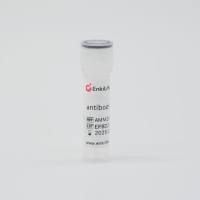Myoblast Fusion in Drosophila
互联网
549
Myogenic differentiation in Drosophila melanogaster , as in many other organisms, involves the generation of multinucleate muscle fibers through the fusion of myoblasts. Prior to fusion, the myoblasts become specified as one of two distinct cell types. They then become competent to fuse and express genes associated with cell recognition and adhesion. Initially, cell-type– specific adhesion molecules mediate recognition and fusion between these two distinct populations of myoblasts. Intracellular proteins that are essential for the fusion process are then recruited to points of cell–cell contact at the membrane, where the cell surface molecules have become localized. Many of these cytosolic proteins contribute to reorganization of the cytoskeleton through activation of small guanosine triphosphatases and recruitment of actin nucleating proteins. Following the initial fusion event, the ultimate size of the syncytia is achieved through multiple rounds of fusion between the developing syncytia and mononucleate myoblasts. Ultrastructural changes associated with cell fusion include recruitment of electron-dense vesicles to points of cell–cell contact, resolution of these vesicles into fusion plaques, fusion pore formation, and membrane vesiculation. This chapter reviews our current understanding of the genes, pathways, and ultrastructural events associated with fusion in the Drosophila embryo, giving rise to multinucleate syncytia that will be used throughout larval life.









